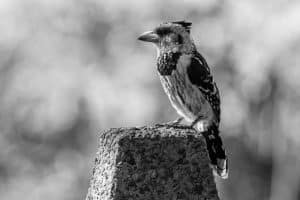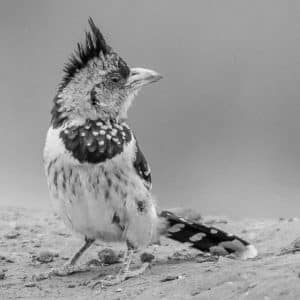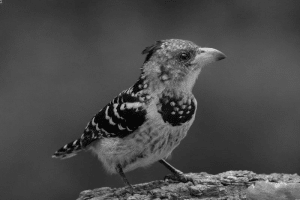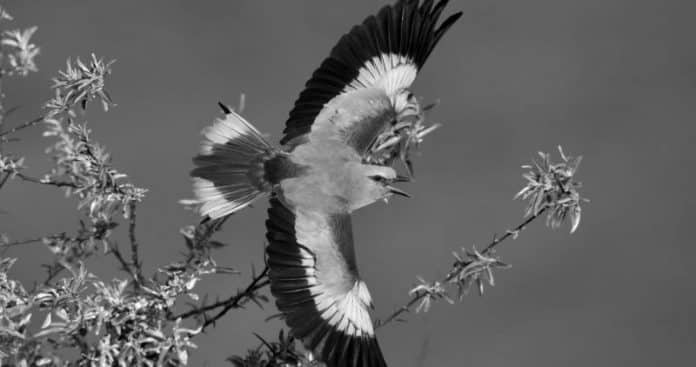Introduction to the Crested Barbet
As a birdwatching enthusiast, you are always on the lookout for unique and captivating avian species to observe and appreciate. Tanzania, with its diverse and rich ecosystem, offers a plethora of bird species to discover, and one such fascinating bird is the Crested Barbet. The Crested Barbet in Tanzania, scientifically known as Trachyphonus vaillantii, is a charming and distinctive bird that can be found in various regions of Tanzania. With its vibrant plumage and melodious calls, the Crested Barbet is a sought-after sighting for birdwatchers visiting Tanzania.
Habitat and Distribution of the Crested Barbet in Tanzania

The Crested Barbet is widely distributed across Tanzania, primarily inhabiting woodland areas, savannas, and open forests. It is commonly found in both coastal and inland regions, thriving in habitats with abundant fruit trees and suitable nesting sites. While the Crested Barbet is adaptable and can be spotted in diverse environments, it is most commonly observed in the northern and eastern parts of Tanzania, including the Serengeti, Arusha, and Manyara regions. Its presence in these areas offers birdwatching enthusiasts a prime opportunity to observe and appreciate this captivating species in its natural habitat.
Unique Characteristics of the Crested Barbet
The Crested Barbet is renowned for its striking appearance, adorned with vibrant colors and distinct markings that make it a standout bird in the Tanzanian landscape. Its most prominent feature is the striking combination of red, yellow, and black plumage, which adorns its body in a captivating display of natural beauty. The prominent crest on its head further adds to its allure, giving the bird a regal and distinctive appearance. Additionally, the Crested Barbet is characterized by its stout and slightly curved beak, perfectly suited for feeding on fruits, insects, and small reptiles. Its unique appearance and behavior make it a fascinating subject for birdwatchers seeking to capture the essence of Tanzania’s avian diversity.
The Behavior and Diet of the Crested Barbet
Observing the behavior and feeding habits of the Crested Barbet provides valuable insights into its role within the Tanzanian ecosystem. This species is known for its active and vocal nature, often emitting a series of loud, repetitive calls that echo through the woodlands where it resides. These calls serve as territorial markers and communication signals between mating pairs, adding an enchanting soundtrack to the natural surroundings. In addition to its vocalizations, the Crested Barbet is a frugivorous bird, primarily feeding on a diet of various fruits, berries, and insects. Its foraging behavior, characterized by agile movements and adept fruit consumption, showcases the bird’s adaptability and resourcefulness in utilizing the abundance of natural food sources available in Tanzania.
Conservation Efforts for the Crested Barbet in Tanzania
Amidst the diverse array of avian species in Tanzania, conservation efforts play a crucial role in safeguarding the populations of birds like the Crested Barbet. While the species is not currently considered globally threatened, the preservation of its natural habitats and the protection of its nesting sites are essential for ensuring its continued presence in the Tanzanian ecosystem. Conservation organizations and local initiatives in Tanzania are actively involved in monitoring and conserving the habitats of the Crested Barbet, promoting sustainable practices that support the coexistence of wildlife and human activities. By raising awareness about the importance of preserving the natural environment, these efforts contribute to the long-term protection of the Crested Barbet and other avian species in Tanzania.
Best Places for Birdwatching and Spotting the Crested Barbet in Tanzania

When it comes to birdwatching in Tanzania, certain locations stand out as prime spots for observing the diverse birdlife, including the captivating Crested Barbet. The northern and eastern regions of Tanzania, encompassing the Serengeti National Park, Arusha National Park, and Lake Manyara National Park, offer exceptional opportunities for spotting the Crested Barbet in its natural habitat. The lush woodlands and open savannas of these areas provide ideal environments for the bird to thrive, allowing birdwatching enthusiasts to witness its vibrant plumage and characteristic behaviors. Additionally, the Usambara Mountains and the coastal regions of Tanzania are home to populations of Crested Barbets, further expanding the scope of birdwatching experiences available to enthusiasts.
Photography Tips for Capturing the Crested Barbet
Photographing the Crested Barbet in Tanzania presents an exciting challenge for birdwatching enthusiasts seeking to capture the bird’s beauty and behavior through their lens. When photographing this captivating species, it is essential to approach the bird’s habitat with respect for its natural environment and minimize disturbances that could affect its behavior. Utilizing telephoto lenses and patiently observing the Crested Barbet from a distance allows for the capture of detailed and intimate shots without causing undue stress to the bird. Additionally, focusing on the bird’s unique features, such as its vibrant plumage and distinctive crest, can result in stunning photographs that encapsulate the essence of the Crested Barbet in the Tanzanian wilderness.
Birdwatching Tours and Guides for Observing the Crested Barbet in Tanzania
For birdwatching enthusiasts seeking expert guidance and immersive experiences in observing the Crested Barbet, birdwatching tours and guides in Tanzania offer invaluable opportunities to explore the bird’s habitat and behavior. Experienced birdwatching guides, with their in-depth knowledge of local avian species, can provide insights into the habits and ecology of the Crested Barbet, enhancing the birdwatching experience for enthusiasts. Furthermore, joining organized birdwatching tours allows participants to access remote and pristine areas where the Crested Barbet thrives, increasing the likelihood of memorable sightings and encounters with this captivating species. By engaging with knowledgeable guides and fellow birdwatching enthusiasts, individuals can gain a deeper appreciation for the Crested Barbet and its significance within the Tanzanian ecosystem.
The Role of Crested Barbet in Tanzanian Ecosystems

As a prominent avian species within the Tanzanian landscape, the Crested Barbet plays a significant role in the ecological balance of its habitats. By feeding on a diet of fruits, berries, and insects, the Crested Barbet contributes to seed dispersal and insect control, exerting positive influences on the regeneration of plant species and the maintenance of insect populations within its ecosystem. Furthermore, the bird’s vocalizations and territorial behaviors contribute to the dynamics of the woodland and savanna environments, establishing its presence as a key contributor to the acoustic tapestry of Tanzania’s natural spaces. Understanding the role of the Crested Barbet in Tanzanian ecosystems underscores the importance of preserving its habitats and ensuring the continuity of its ecological contributions for future generations.
Conclusion and Encouragement for Birdwatching Enthusiasts
In conclusion, the Crested Barbet stands as a captivating symbol of Tanzania’s avian diversity, offering birdwatching enthusiasts a remarkable opportunity to connect with the natural beauty of this East African nation. Through its vibrant plumage, melodious calls, and distinctive behaviors, the Crested Barbet embodies the allure of birdwatching in Tanzania, inspiring enthusiasts to immerse themselves in the exploration of its habitats and conservation efforts. As you venture into the woodlands and savannas of Tanzania, keep your senses attuned to the sights and sounds of this enchanting species, and embrace the wonder of observing the Crested Barbet in its natural environment. By fostering a deep appreciation for the Crested Barbet and the ecosystems it inhabits, you contribute to the preservation of Tanzania’s avian heritage and the continued enchantment of birdwatching experiences for generations to come.

































